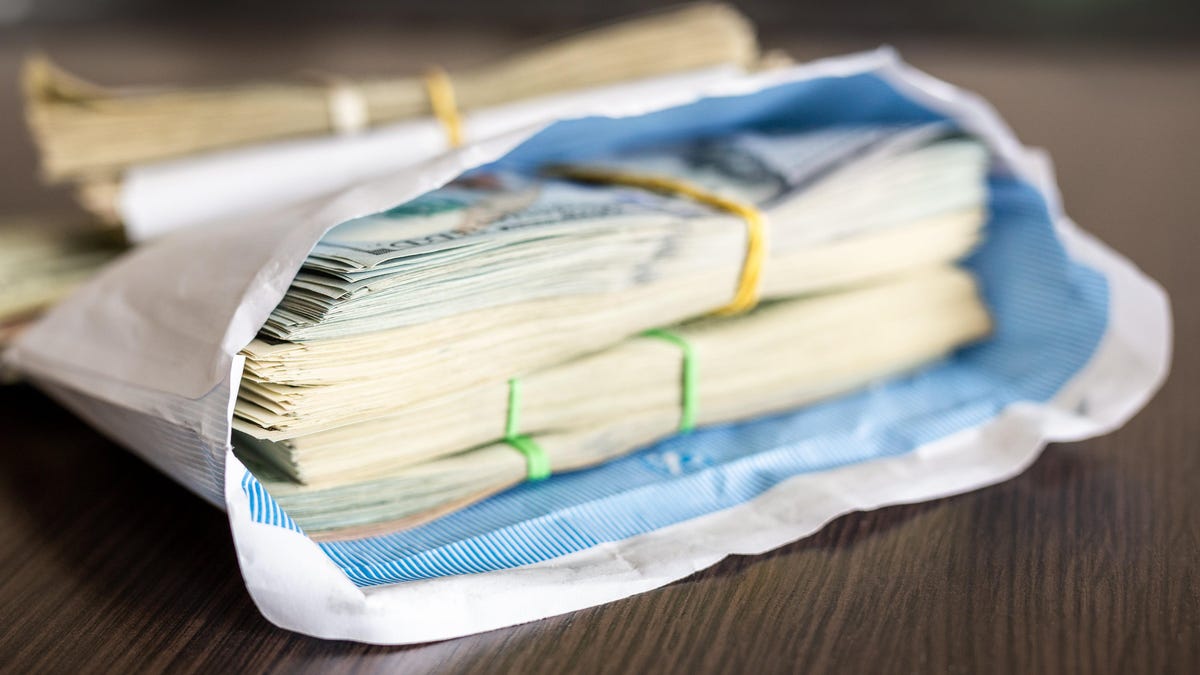This Is How Long Your Money Is Physically Stored.

While the fabled cashless society may eventually become a reality, for now, cash is still a pretty useful thing. There are still scenarios where you need fiat money, from a local restaurant that only accepts cash to an extended power outage that renders your digital payments useless. As a result, most people have at least some cash on hand for emergencies. It’s best to forget cash for emergencies until you need it so you don’t have to spend it all the time, but that adds another complication: cash doesn’t last forever.
While U.S. law explicitly states that any paper money printed after 1914 is legal tender, meaning your money will never “burn” like anything else in this world, it will eventually go bad . . In fact, paper money in circulation has a fixed life span of 7 to 23 years , depending on its denomination, due to wear and tear in handling. And the Federal Reserve is constantly destroying cash and replacing it with new banknotes to combat this degradation.
But what about the cash that’s in your desk drawer, under your mattress, stacked in your walls, or buried in your backyard? If the power goes out and you go looking for your stash of money, what are the chances that you’ll find nothing but regret instead?
How to properly store cash
If you store your cash properly, it should last longer than you: as much as 100-150 years. The key is that the business is “stored properly”. Cash should be kept in a dry place away from the sun and other elements. If you are aiming for the maximum lifespan of cash, you need to store it in a climate-controlled facility (like a safe) in double plastic or mylar envelopes . Do it and your grandchildren will be able to spend this money.
If that’s too much for your emergency pizza fund, your money could be gone in just a few months because there are a lot of things out there trying to destroy your money.
Pests that can destroy money
Nature is metal, and creatures roam the earth that can eat a surprisingly long list of things, including money. The US currency is made up of 75% cotton and 25% linen (a combination called rag). This makes it strong, washable, and durable, but it also contains cellulose and starch, making it an attractive food for many pests:
- Silver fish. If you have money at home and you see silverfish scurrying around, worry. They will be attracted to the starch, and they will chew these bills with pleasure . Your first sign will be some random, jagged holes in the money.
- Termites. Termites don’t just eat wood, they cook their food out of anything that contains cellulose. This includes the money you’ve been hoarding in the walls like a drug lord.
- Mice. If you’ve ever experienced a mouse infestation in your home, you know that these rodents will eat just about anything . If any mice stumble upon your cash supply, they will completely eat it up .
If you bury your money like they do in the movies, you’d better wrap it really, really well, because there are even more bugs and other creatures that would love to eat it, and your stash will be gone in about 5…10 years.
Mold can ruin your money
Mold is a hard-working material, and under the right conditions, it grows on just about anything. If your money gets wet due to a flood, a spill, or simply very wet conditions in its location, mold can begin to eat into your money within a day or two and begin to cause visible damage within a few weeks. If not detected, this mold will eventually destroy your currency – a process that can take as little as 200 days, according to scientist Douglas Cobb.
Keeping some cash on hand is a good idea as emergency insurance, but it’s also a good idea to upgrade this stack from time to time to guard against the forces of entropy that seek to bankrupt you.